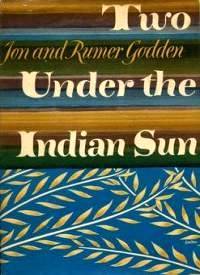India remains a mysterious, distant place for many travelers. In 1914, for two young English girls, daughters of a British civil servant in one of the smaller cities, it was distant almost beyond measure. After returning to India following some months with relatives in London, they together wrote a remembrance of a few years in India. When writing their story from a distant perspective, in the 1960's, they noted that it wasn't an autobiography they were attempting. It was the 'evocation of a time that is gone.'
“This is not an autobiography as much as an evocation of a time that is gone,” write Jon and Rumer Godden at the start of this magical book. At the time the book was published, both women were experienced writers of novels and short stories. Rumer was the more prolific and successful, best known for her 1939 novel, Black Narcissus, and her 1963 best-seller, The Battle of the Villa Fiorita. Jon did not begin publishing until she was over forty, but like Rumer, she set a number of her books in India, including her 1956 novel, The Seven Islands.
Two Under the Indian Sun is a lyrical, funny, and charming recollection of the seven years the sisters spent with their family in Narayanganj, a city on the Shitalakshya River in then-East Bengal (and now Bangladesh). The girls had been sent to live with relatives in England and receive proper English educations in 1913, but a year later, with war about to break out in Europe, they were brought back to the relative safety of India.
And safe India was, particularly from their child’s eyes: “We never felt we were foreigners, not India’s own; we felt at home, safely held in her large warm embrace, content as we were never to be content in our own country.” Their father, referred to as Fa, ran a steamship company based in Narayanganj, and the girls enjoyed the run of a large house with a courtyard and a retinue of cooks, amahs, maids, babus, and other servants. Like many of the better-off Anglo-Indians, the family travelled into the lower reaches of the Himalayas and summered in one of the hill stations like Simla.
They also had the chance to travel up some of the wide, slow rivers on their father’s steamships and were able to experience a considerable part of East Bengal. “We never thought,” they write, “as many people do, that the Bengal landscape was monotonous and dull; each little village, with its thatched roofs among the tall slim coconut palms and dark mango trees against the jewel-bright background of the rice or mustard fields, was beautiful in its own calm way and full of interest.” These trips were among their favorite times. “It was bliss to wake early and lie watching the reflected sunlight dancing on the ceiling, to feel the comfortable beat of the engines beneath us, to listen to the tinkle of the carafe on the washstand, and to know that another whole river day was before us.”



